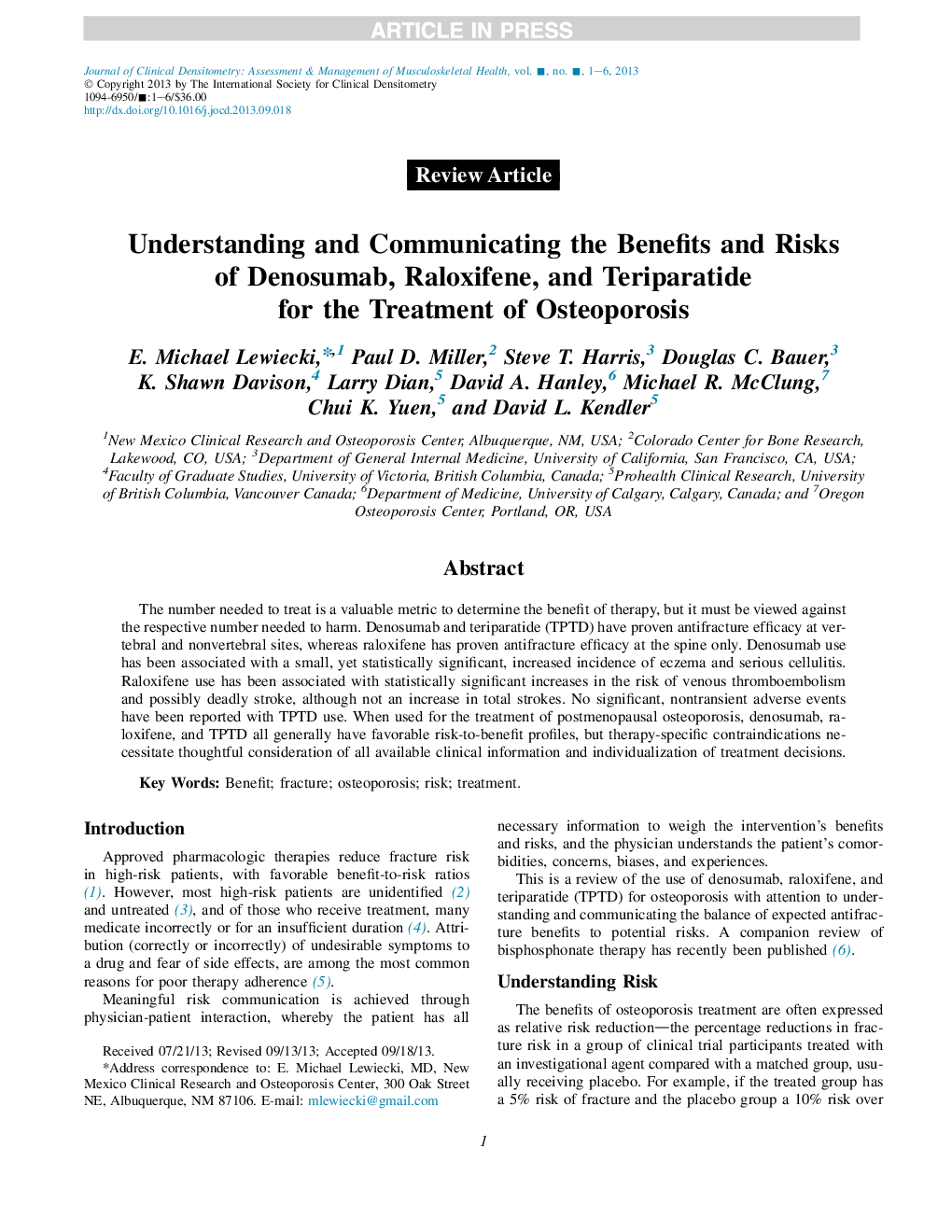| Article ID | Journal | Published Year | Pages | File Type |
|---|---|---|---|---|
| 10168113 | Journal of Clinical Densitometry | 2014 | 6 Pages |
Abstract
The number needed to treat is a valuable metric to determine the benefit of therapy, but it must be viewed against the respective number needed to harm. Denosumab and teriparatide (TPTD) have proven antifracture efficacy at vertebral and nonvertebral sites, whereas raloxifene has proven antifracture efficacy at the spine only. Denosumab use has been associated with a small, yet statistically significant, increased incidence of eczema and serious cellulitis. Raloxifene use has been associated with statistically significant increases in the risk of venous thromboembolism and possibly deadly stroke, although not an increase in total strokes. No significant, nontransient adverse events have been reported with TPTD use. When used for the treatment of postmenopausal osteoporosis, denosumab, raloxifene, and TPTD all generally have favorable risk-to-benefit profiles, but therapy-specific contraindications necessitate thoughtful consideration of all available clinical information and individualization of treatment decisions.
Related Topics
Health Sciences
Medicine and Dentistry
Endocrinology, Diabetes and Metabolism
Authors
E. Michael Lewiecki, Paul D. Miller, Steve T. Harris, Douglas C. Bauer, K. Shawn Davison, Larry Dian, David A. Hanley, Michael R. McClung, Chui K. Yuen, David L. Kendler,
